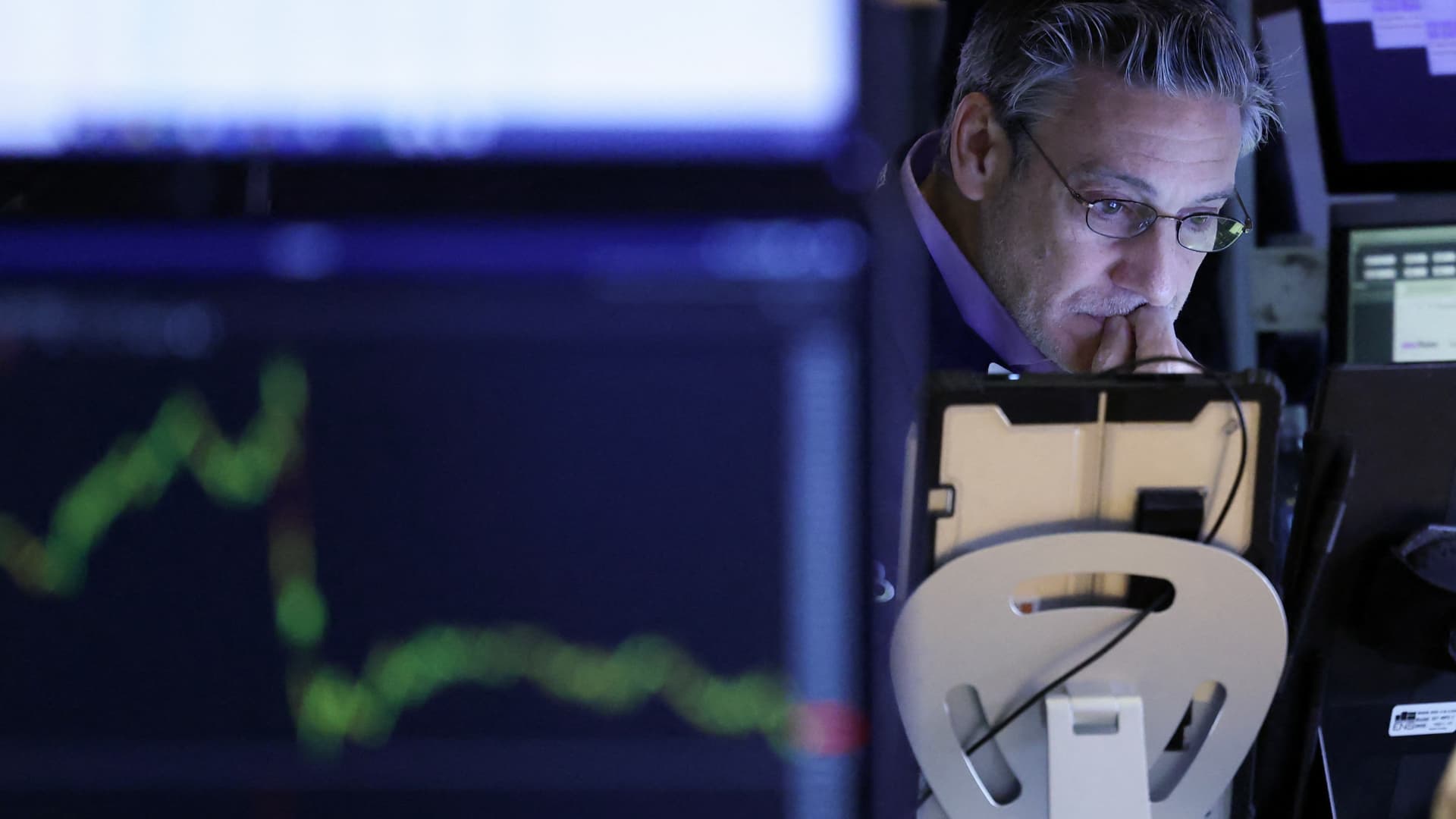A dealer works on the ground of the New York Inventory Change (NYSE) on the opening bell in New York Metropolis, on April 3, 2025.
Charly Triballeau | Afp | Getty Photographs
Small-cap shares, which had been as soon as considered main beneficiaries of President Donald Trump’s insurance policies, entered bear market territory on Thursday after a large inventory market rout that adopted the administration’s sweeping and aggressive tariff rollout.
The Russell 2000 Index was down greater than 5% on Thursday, bringing its losses from its November 25 file near about 21%. On Wall Road, a ten% pullback is taken into account a correction, however a 20% decline is a bear market. The S&P 500 and Nasdaq Composite are each in correction territory, whereas the Dow Jones Industrial Common is just under that mark.
“They’re getting hit as a result of the economic system is softening. That is going to harm earnings,” Keith Lerner, co-chief funding officer at Truist, informed CNBC. “On the opposite facet, they’re nonetheless paying excessive ranges of curiosity funds on debt as a result of they’ve extra of this floating-rate debt.”
“They’re getting squeezed on either side,” he stated.
This can be a sharp reversal from the features seen within the buying and selling days following November’s election, with small caps seen as beneficiaries from deregulation, decrease tax charges and even tariffs for the reason that group has fewer multinationals than massive cap shares.
The Russell 2000 closed out that election week with an 8.6% advance, virtually 4 share factors greater than the 4.7% weekly acquire of the S&P 500. Together with that, it turned one of many hottest Trump trades. The truth is, Tom Lee – managing associate and head of analysis at Fundstrat – stated at the moment that small caps may outperform by greater than 100% over the following couple of years.

Russell 2000 since November 25 file
However the Russell 2000 was dragged decrease Thursday in names like Victoria’s Secret and City Outfitters, which supply a number of merchandise from different international locations and will see considerably greater prices and decrease margins from the tariffs.
And the group is especially delicate to financial shifts given their small measurement, and due to this fact much less monetary flexibility as large-cap shares. JPMorgan predicted that if Trump’s sweeping new reciprocal tariffs stay, the U.S. economic system will doubtless fall right into a recession.
The Russell 2000 beforehand neared bear market territory in March amid a monthlong market sell-off spurred by uncertainty surrounding Trump’s tariffs plans and rising concern on the Road of a slowing economic system.
“Small caps, within the first half of an financial recession, are often down 13%, so it is already worse than the place we had been for the typical recession,” stated Steven DeSanctis, an fairness strategist masking small- and mid-cap corporations at Jefferies, in an interview with CNBC. “For the typical bear market, small caps are down 26%, so we’re nearing that quantity.”
The place’s the underside?
Whereas small caps are in turmoil proper now, DeSanctis believes the group may ultimately discover a backside, particularly if the Federal Reserve begins reducing rates of interest once more.
Merchants are at the moment pricing in a 62.5% likelihood of 4 quarter-percentage-point cuts by year-end 2025, with greater than 95% odds of the following reduce being on the central financial institution’s June assembly, per the CME FedWatch Software.
“If the economic system will get weak sufficient, can we get assist from the Fed? We are saying sure. That is often good for small caps,” the fairness strategist stated.
DeSanctis added that the trail from right here may appear to be a “powerful” first two quarters, although no recession, earlier than the Fed presumably involves the rescue in the summertime. From there, he anticipates that a number of the issues surrounding tariffs – which may elevate enter prices for companies – could also be resolved, prompting the market to concentrate on deregulation as soon as once more.
Lerner, who’s underweight small caps, is equally constructive. He famous that along with deregulation, a higher concentrate on tax reduce extensions and a return of animal spirits resulting in a pickup in mergers and acquisitions ought to present a possibility for small caps to do nicely later within the yr, or at any time when buyers really feel that the worst of the financial outlook is behind them.
What’s extra, as a result of issues “do not transfer in a straight line,” it “would not be stunning” for small caps in addition to massive caps to quickly see an “oversold bounce,” Lerner stated.
Lerner does not imagine massive caps will face an identical destiny of coming into bear market territory as small caps. The S&P 500 remains to be a substantial distance away from a bear market, being greater than 11% off its Feb. 19 excessive in correction territory.
“With small caps being down 20%, it tells you they’ve already been down – the bear market did not begin right here. It has been occurring for a number of months,” the co-CIO stated. “Correspondingly, massive caps are additionally down, however they’re down about half relative to small caps. Our base case for giant caps is you might even see additional draw back, however we’re not calling for a bear market.”



